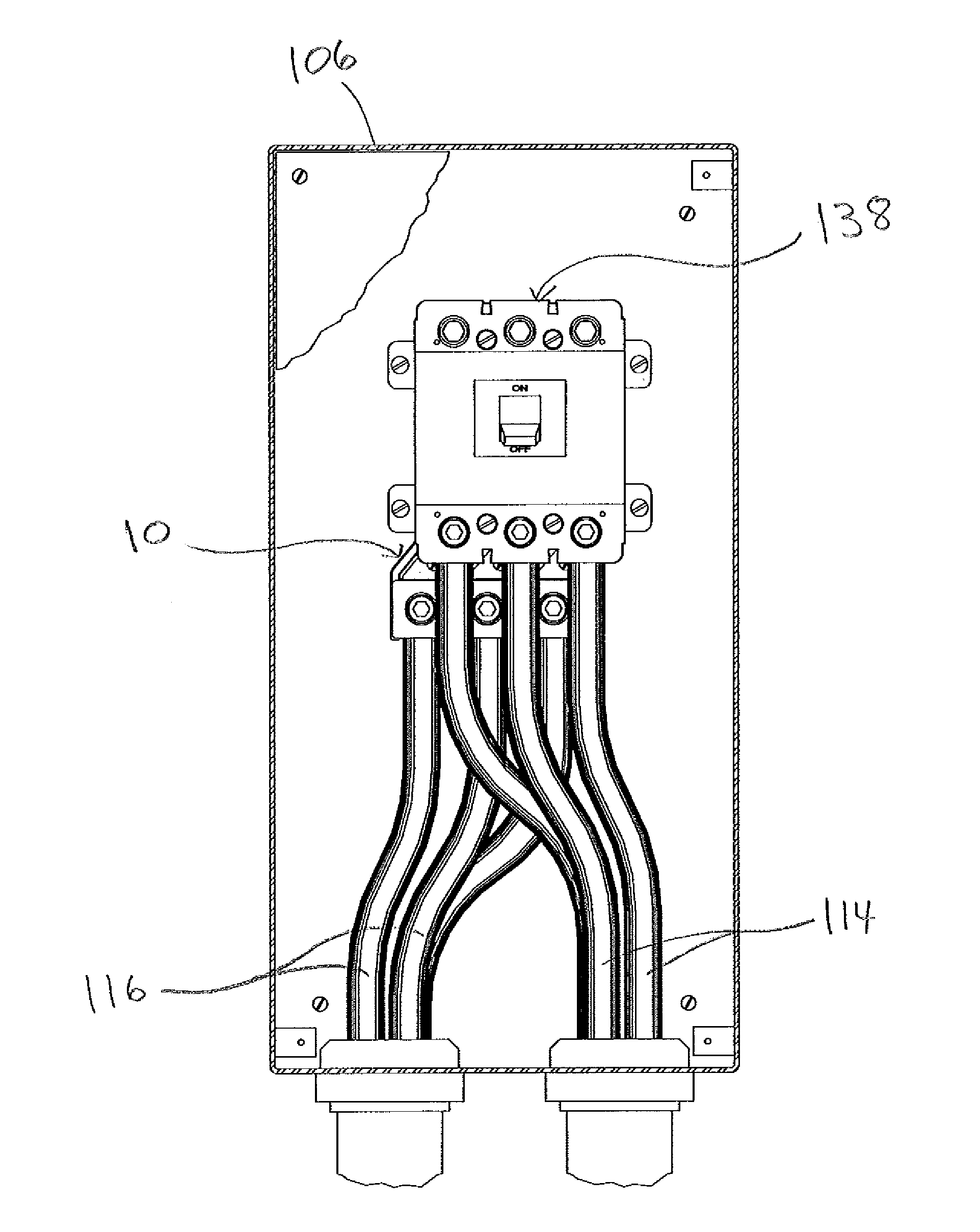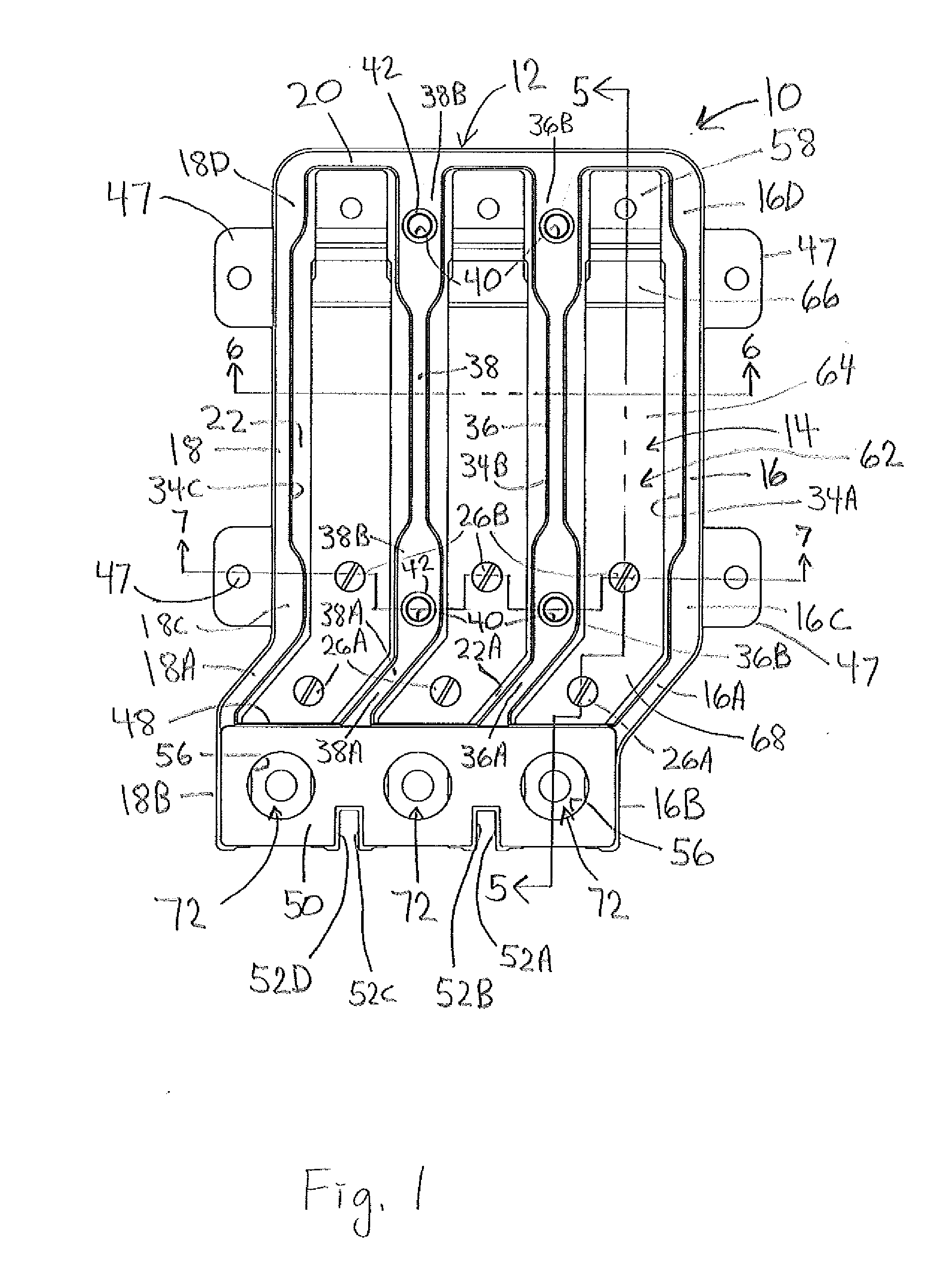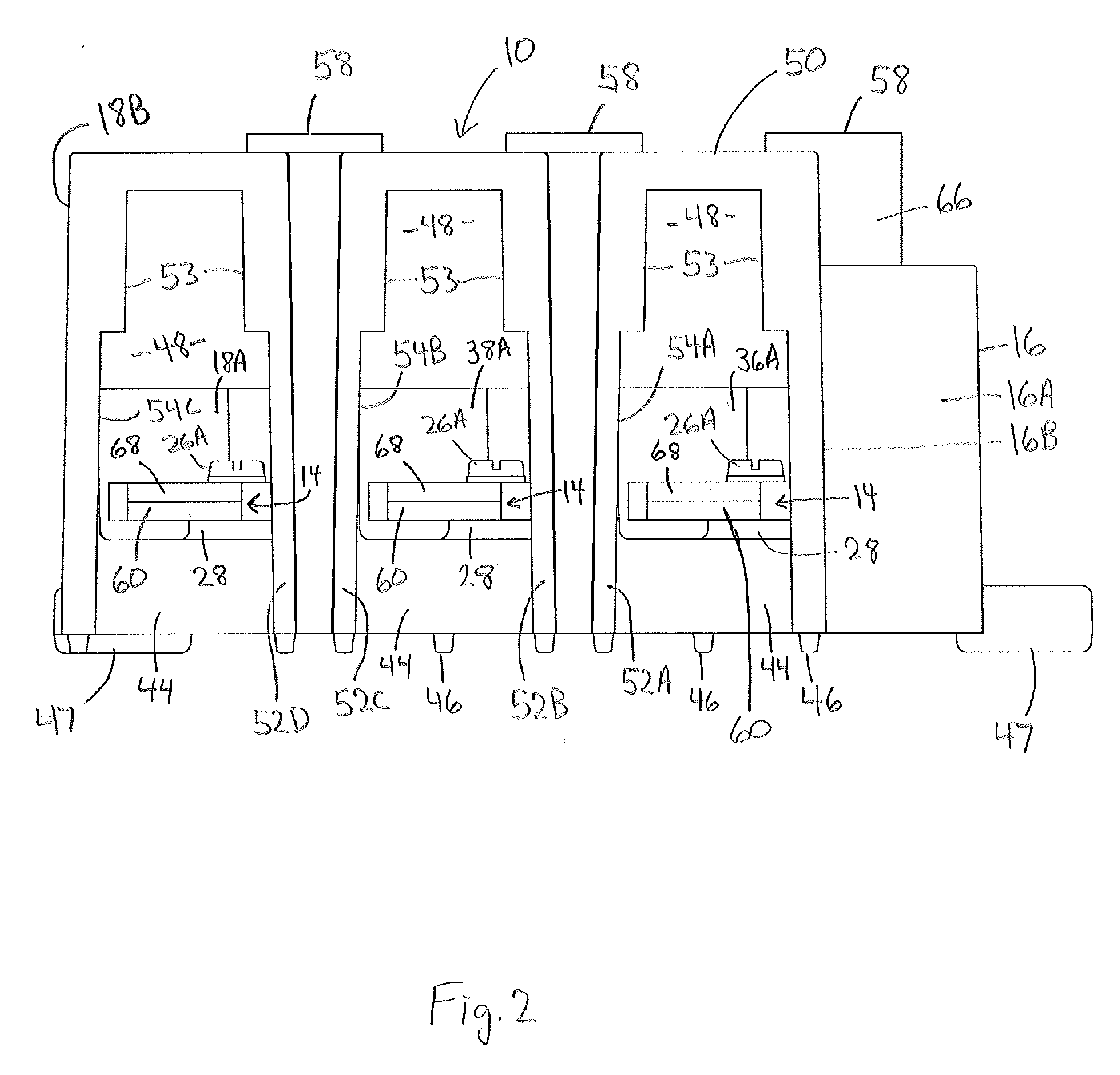Terminal Reversing Block
a technology of reversing blocks and terminals, which is applied in the direction of protective switch terminals/connections, coupling device connections, protective switch details, etc., can solve the problems of increasing the cost of arcs and the space required to bend cables in reversing arcs, so as to minimize the length and width, the effect of minimizing the height required
- Summary
- Abstract
- Description
- Claims
- Application Information
AI Technical Summary
Benefits of technology
Problems solved by technology
Method used
Image
Examples
Embodiment Construction
[0033]A terminal reversing block 10 in accordance with the present invention is shown in FIG. 1. Terminal reversing block 10 is adapted for heavy duty power transmission applications. For example and not by way of limitation, the illustrated terminal reversing block 10 is rated at 240 volts AC / 125 volts DC and 400 amps. Terminal reversing block includes three main components, a housing or base 12, one or more terminals or blades 14, and a terminal collar 72 associated with each terminal. For clarity in illustrating the housing 12 and terminals 14, the terminal collars 72 are not shown in FIGS. 2-7. The terminal collars are shown and described below in connection with FIGS. 11 and 14. Also, references herein to front, side, top, bottom and the like are from the point of view of a terminal reversing block mounted on a horizontal surface. Obviously the terminal reversing block could be mounted on a vertical surface such as a wall or a rack. Accordingly, directional references to the bl...
PUM
 Login to View More
Login to View More Abstract
Description
Claims
Application Information
 Login to View More
Login to View More - R&D
- Intellectual Property
- Life Sciences
- Materials
- Tech Scout
- Unparalleled Data Quality
- Higher Quality Content
- 60% Fewer Hallucinations
Browse by: Latest US Patents, China's latest patents, Technical Efficacy Thesaurus, Application Domain, Technology Topic, Popular Technical Reports.
© 2025 PatSnap. All rights reserved.Legal|Privacy policy|Modern Slavery Act Transparency Statement|Sitemap|About US| Contact US: help@patsnap.com



